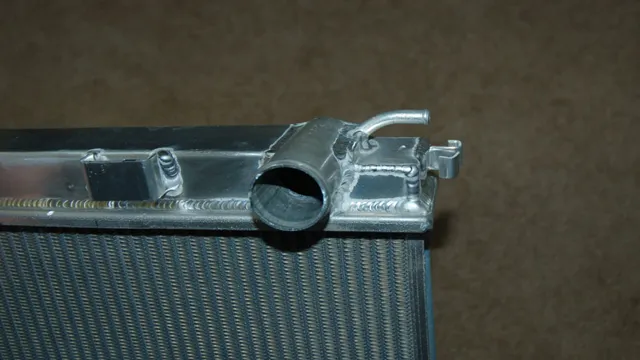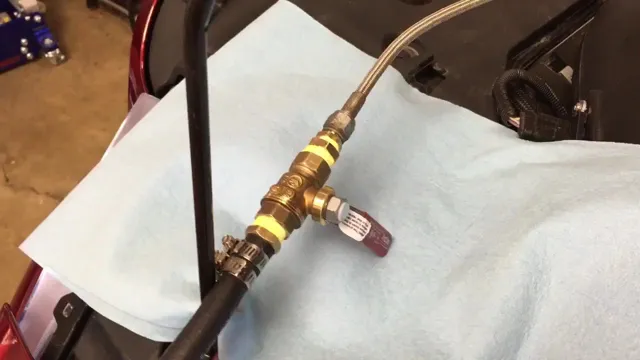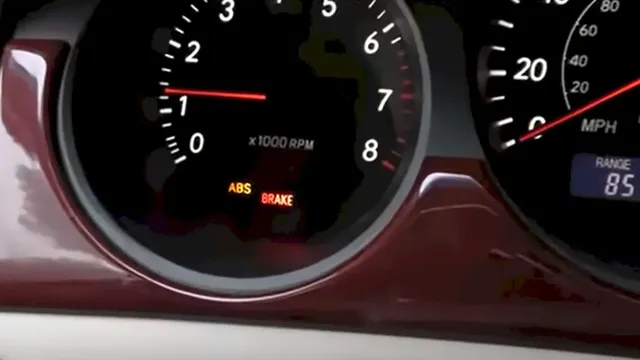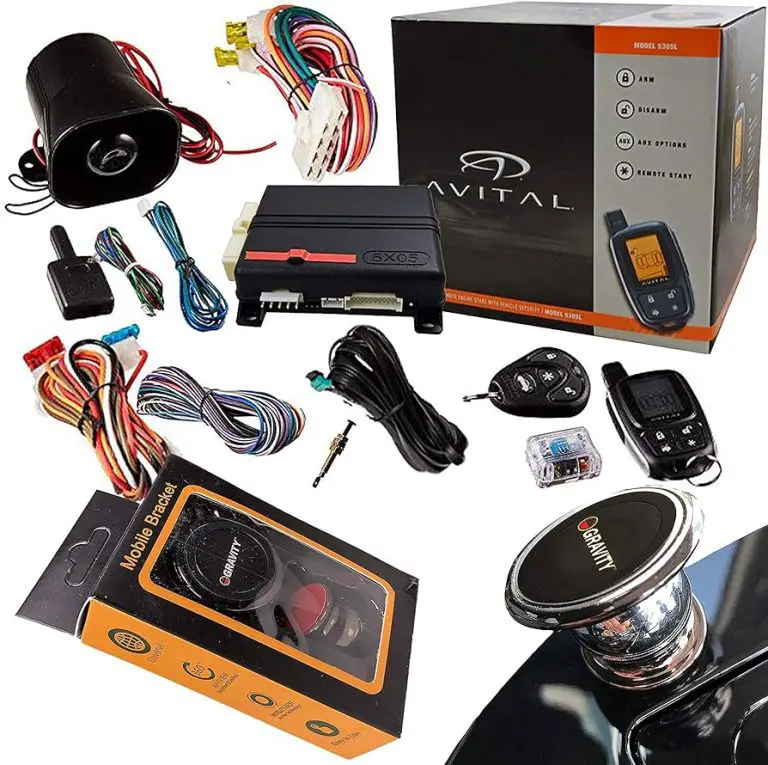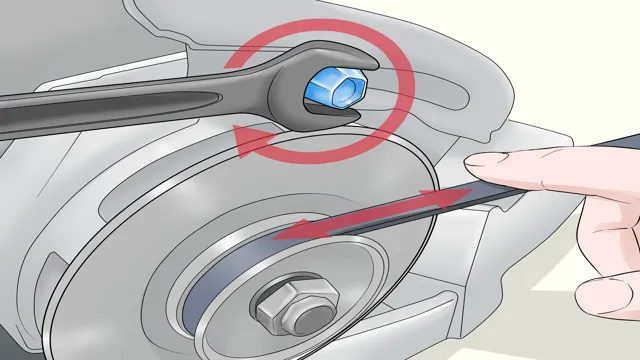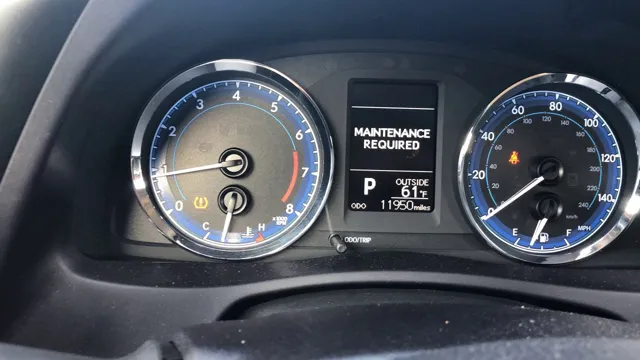DIY Guide: Quick and Easy Steps to Fix Your Broken Radiator Overflow Nipple
Have you been experiencing an overheating engine or constantly replenishing your radiator fluid? It might be due to a broken radiator overflow nipple. This small but crucial component of your vehicle’s cooling system is responsible for allowing excess coolant to escape, preventing pressure buildup. Unfortunately, it’s also a delicate part that can easily break.
But don’t worry, fixing a broken radiator overflow nipple can be a simple and inexpensive repair if caught early. In this blog, we’ll discuss what a radiator overflow nipple is, how it breaks, and how you can fix it. So, sit back, relax, and read on to learn more about this vital piece of your car’s engine.
What is a Radiator Overflow Nipple?
A radiator overflow nipple is a small plastic or metal component located at the top of your car’s radiator. Its purpose is to allow excess coolant to escape when the engine is running hot and to prevent airlocks in the cooling system. However, if the overflow nipple becomes damaged or broken, it can lead to coolant leakage, engine overheating, and other severe problems.
To fix a broken radiator overflow nipple, you will need to remove the damaged component, clean the area around it, and install a new one. This task can be done relatively easily and quickly, but it is essential to ensure you have the correct replacement part, and you are confident in your skills to avoid further damage to your car’s cooling system. Failure to fix a broken radiator overflow nipple can result in costly repairs, extensive engine damage, or even a complete engine failure.
Thus, regular maintenance checks to identify and fix damaged overflow nipples can prevent severe engine problems and ensure the longevity of your car’s cooling system.
Definition and Function
A radiator overflow nipple is a small but vital component in a car’s cooling system. It’s essentially a small tube or pipe that extends from the top of the radiator cap and connects to a separate overflow reservoir. Its primary function is to allow excess coolant to escape from the radiator when the engine gets hot and the coolant expands.
When the coolant cools down, it contracts and is drawn back into the radiator through the overflow nipple. Without this important feature, hot coolant could escape from the radiator and cause serious engine damage. The radiator overflow nipple is often made of plastic or metal and can be threaded or attached with a hose clamp.
So, next time you pop the hood of your car, take a moment to appreciate the little nipple that keeps your engine running smoothly!
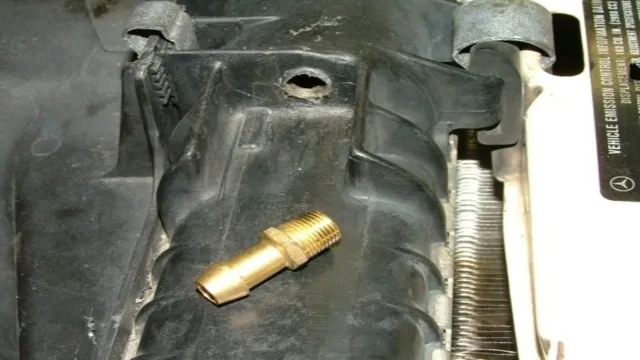
Signs of a Broken Radiator Overflow Nipple
If you notice that your coolant level is always low and there is no visible leakage on your radiator hoses or radiator, it might be a sign of a broken radiator overflow nipple. This small plastic or metal piece is located on top of your radiator and serves as a connector between your radiator and your overflow tank. If it breaks, it can cause the coolant to leak out and may eventually lead to overheating of your engine.
To fix a broken radiator overflow nipple, you will need to replace it with a new one. You can purchase a replacement nipple at your local auto parts store or online. It is a relatively simple fix and can be done with basic tools in about an hour.
Just make sure to drain your coolant before starting the repair and refill it afterward. Remember, neglecting a broken radiator overflow nipple can cause serious damage to your engine, so it’s better to fix it as soon as possible. By doing so, you can save yourself from more expensive repairs down the road.
Symptoms and Indicators to Look for
As a car owner, keeping an eye on the health of your vehicle is paramount. One component that often goes unnoticed is the radiator overflow nipple. This small but essential part is responsible for releasing excess pressure caused by heat inside the radiator.
Signs of a broken radiator overflow nipple include coolant leaks in the engine bay, low coolant levels, and steam coming from the radiator. It’s vital to address this issue immediately if you notice any of these symptoms, as a damaged overflow nipple can lead to engine damage and even total failure if not fixed promptly. To avoid such costly repairs, it’s recommended you have your radiator inspected regularly by a qualified mechanic.
A well-maintained radiator ensures you can enjoy worry-free driving and extend the lifespan of your vehicle.
Repairing a Broken Radiator Overflow Nipple
If you’re dealing with a broken radiator overflow nipple, don’t panic! While it may seem like a daunting problem to fix, it’s actually quite manageable with the right tools and some basic know-how. To get started, you’ll need a replacement nipple of the same size and material as the original. Then, using pliers, carefully remove the broken piece from the radiator.
Once it’s out, clean the area thoroughly to ensure a good seal. Next, apply a small amount of thread sealant to the new nipple and screw it in place, making sure to tighten it properly without over-tightening. Finally, test your repair by adding coolant to the radiator and checking for any leaks.
By following these simple steps, you can fix your broken radiator overflow nipple and get back on the road in no time!
Tools Needed and Step-by-Step Process
To repair a broken radiator overflow nipple, you’ll need a few tools to get the job done. You’ll need a replacement overflow nipple, a pair of pliers, a hacksaw, two hose clamps, and some thread sealant. Once you’ve gathered your supplies, begin by draining the coolant system and removing the broken nipple.
Next, install the replacement nipple and use the thread sealant to ensure a secure fit. Then, reattach the hoses using the hose clamps. Finally, refill the coolant system and check for any leaks before taking your vehicle for a test drive.
Making sure your radiator overflow nipple is in top condition will prevent future problems and ensure your vehicle runs smoothly.
Preventing Future Problems
If you’re experiencing issues with a broken radiator overflow nipple, it’s important to take steps to prevent future problems. One way to do this is by regularly checking and maintaining your cooling system, including the overflow tube and surrounding components. Additionally, it’s a good idea to invest in a high-quality replacement nipple to ensure it can withstand the demands of your vehicle’s operation.
Proper installation is also critical, as a poorly installed nipple can quickly lead to leaks and other issues. By staying on top of maintenance and addressing any problems promptly, you can keep your radiator in good condition for the long haul, minimizing the likelihood of future problems with the overflow nipple or other components.
Tips for Maintenance and Care
Preventing future problems is crucial when it comes to maintaining and caring for your belongings. Whether it’s your car, your home, or your personal items, taking preventive measures can save you time and money. One of the easiest and most effective ways to prevent future problems is to keep everything clean.
Dirt and grime can cause wear and tear, and can even lead to mechanical issues. You should also regularly inspect your belongings to ensure that everything is in good condition. For example, if you notice a small crack in your windshield, getting it fixed right away can prevent it from turning into a larger, more expensive problem down the road.
By taking these simple steps, you can help ensure that your belongings last longer and function properly for years to come.
When to Seek Professional Help
If your car’s radiator overflow nipple is broken, it can be a frustrating problem that can lead to engine damage if not fixed promptly. While some basic repairs can be handled at home with some plumbing skills and tools, it’s important to know when to seek professional help. If your car is still under warranty, taking it to the dealership may be your best option.
Otherwise, look for a reputable auto repair shop that has experience working with radiators and cooling systems. A professional mechanic can diagnose the problem and provide you with an accurate estimate of the repair costs. They can also provide advice on whether it’s best to repair or replace the radiator overflow nipple.
Trying to fix the problem yourself can result in more costly repairs down the road, so it’s worth investing in professional help to ensure the job is done right and your vehicle is safe to drive.
Conclusion
When it comes to fixing a broken radiator overflow nipple, don’t panic! With a little bit of patience and a lot of duct tape, you can patch up your problem in no time. But, if you want a more permanent solution, consider replacing the entire overflow tank or investing in a high-quality radiator. After all, life’s too short to be constantly worrying about leaky nipples.
“
FAQs
What causes a broken radiator overflow nipple?
A broken overflow nipple can occur due to various reasons, including wear and tear from heat and pressure, physical damage from accidents, or simply old age.
How do I know if my radiator overflow nipple is broken?
Signs of a broken overflow nipple can include leaking coolant, overheating engine, a cracked or broken radiator, or a low coolant level.
Can I still drive my car with a broken radiator overflow nipple?
It is not recommended to drive with a broken overflow nipple as it can lead to engine damage and overheating, which can be a safety hazard.
Is it safe to replace a broken radiator overflow nipple myself?
Unless you have experience in car repairs, it is recommended to have a professional mechanic replace a broken overflow nipple as it requires draining and refilling the coolant system and proper installation of the new nipple.

